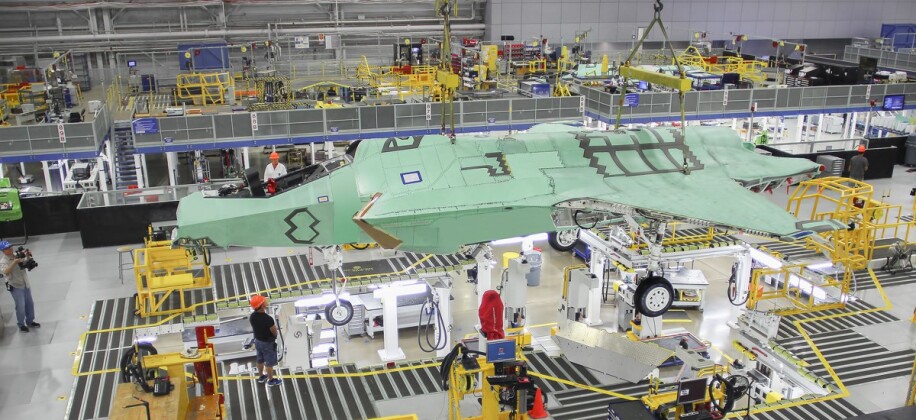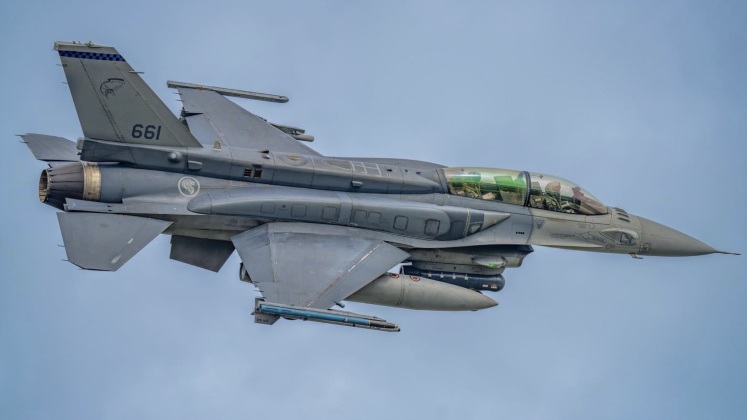News
Singapore Announces Order For First F-35A Fighters as U.S. Deeply Cuts its Own Purchases
The Singaporean Ministry of Defence announced on February 28 that the country would place an order for eight F-35A fifth generation fighters, which would supplement an existing order for 12 F-35B fighters set to begin deliveries in 2026. The F-35B costs approximately 50 percent more than the more basic A variant to procure and has significantly higher operational costs, but is prized by the city state for its ability to conduct short takeoffs and vertical landings. This capability was initially intended primarily to allow the aircraft to operate from aircraft carriers which lack arresting gear or catapult launch systems, but is also useful for services which anticipate a need to operate from short or makeshift airfields. Singapore has by far the smallest landmass of any operator of the F-35, and is also the only client for the F-35B which does not deploy aircraft carriers. Where low international demand for the F-35B means the aircraft can be delivered relatively quickly, particularly as the leading foreign client for the class the British Royal Navy has significantly reduced its own orders, a very long order queue for the F-35A and persistent production shortfalls means the aircraft are not expected to be delivered until around 2030.

Confirmation that Singapore will acquire the F-35A follows a report from Reuters that the United States Military will make an 18 percent cut to its own F-35 procurement, reducing expenditure on acquiring the aircraft by $1.6 billion in 2025. Acquisitions will fall from 83 to under 70 aircraft. Shares of the F-35’s primary contractor Lockheed Martin fell by 2.6 percent after this was first reported. This notably follows a significant shortfall in deliveries in 2023 due to new issues with the aircraft’s development that surfaced that year. In early 2022 the Pentagon also cut planned F-35 acquisitions by 35 percent from 94 to 61 aircraft. The strain on the American military budget has increased considerably since then due to both ongoing military operations against Russian forces in Ukraine, and to a surge in American military involvement in the Middle East from October 2023 to support Israeli forces against a number of regional state and non state actors. With a gridlock in the U.S. Congress leaving it unable to approve new funding, due to disagreements between the Democratic and Republican parties over whether to include tens of billions of dollars in aid to Ukraine in new spending packages, several federal agencies, including the Department of Defence have been forced to operate under stopgap funding bills. This freezes all types of defence spending at levels seen in 2022.

While there is a significant possibility that American orders for F-35s will not recover to previous levels, the number of overseas clients for the fighters has continued to grow rapidly, with Singapore following multiple countries to recently announce their first orders for the F-35A following Greece, Germany, Finland, Switzerland and Canada among others. The F-35A is not only less costly, but also has a significantly superior combat capability to the F-35B. This includes the ability to carry 50 percent more air to air missiles internally, a much longer range, and the ability to fly supersonically and endure high g force loads without issue. The Singaporean Air Force will be the first in the world to operate both variants of the F-35, with F-35As expected to be deployed from larger airfields while the F-35B will be deployed from more remote airbases possibly on faraway islands. Both classes, however, are considered far from ready for high intensity combat, with approximately 800 defects affecting the design while clients ranging from the U.S. Marine Corps to the Belgian Air Force have continued to complain of qualitative deficiencies.

Singaporean Defence Minister Ng Eng Hen stated that the new F-35s would place the country’s air force the “premier league” of air arms, adding that the aircraft would be delivered around 2030. This would coincide with the beginning of retirements of older F-16 fighters, which are direct predecessors to the F-35. The minister previously warned in July 2018 that “F-16s would face obsolescence beyond 2030,” highlighting at the time the need to begin preparing for procurement of a successor. Upon announcing the acquisition, the minister highlighted a “window of opportunity” during which a significant backlog of foreign orders had made the price of the F-35 more competitive. Despite this, however, he warned that other projects may need to be deprioritised to accommodate the costs of acquiring the aircraft. “We’ve done our calculations, and we think that this is the best time to put [in] the order for the F-35As,” he assured. Singapore is the only country in Southeast Asia with a military heavily oriented towards offensive power projection, and has an annual defence budget of approximately $15 billion.

Singapore’s closest neighbours Malaysia and Indonesia were notably both previously expected to consider acquiring their own fifth generation fighters, namely Russian Su-57s, to replace the Su-30s both countries currently operate. A change in administration in Malaysia, however, has significantly reduced this possibility, while Indonesia notably abandoned plans to acquire Russian Su-35 ‘4++ generation’ fighters after being threatened with economic sanctions by the United States. This will leave the F-35s effectively unrivalled and leave it near unchallenged when operating in the region. Within Southeast Asia more widely, Vietnam and Myanmar are both considered likely clients for the Su-57, while the Royal Thai Air Force is reported to be considering acquisitions of Chinese FC-31 fifth generation fighters, both of which are larger aircraft than the F-35 with longer ranged missiles and higher endurances.












